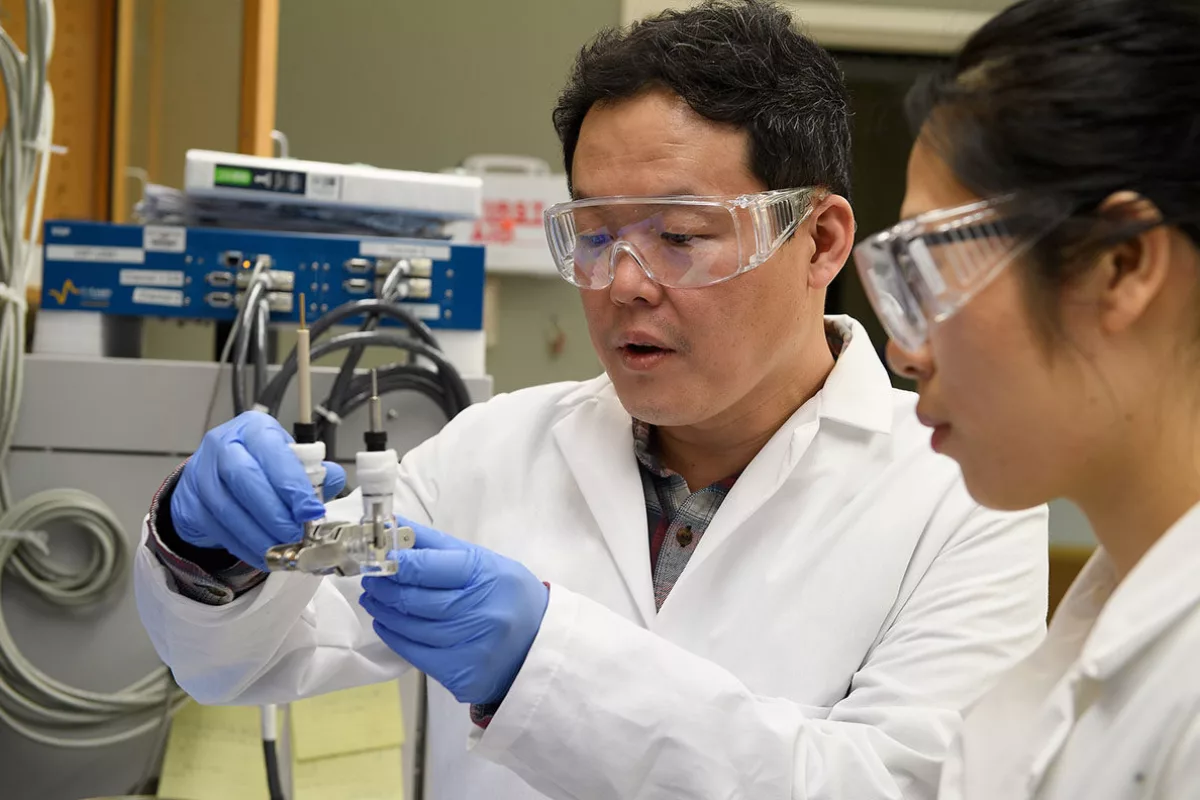One way scientists believe they could greatly improve on the performance of today’s lithium-ion batteries is by introducing lithium metal for use as the anode component. Described by researchers at Washington State University (WSU) as a “dream material,” this would replace current anode materials to give lithium batteries a huge boost, but safely integrating them into the devices has proven problematic. The same scientists have now come up with a way to overcome this hurdle, with a new design that involves a protective layer around the material to prevent it going up in flames.
As a lithium-ion battery charges and discharges, lithium ions travel back and forth between the two electrodes, the cathode and the anode. Today’s anodes are made from a mix of graphite and copper, but scientists see lots of room for improvement. Pure lithium metal offers the highest energy density among solid materials, according to WSU’s Min-Kyu Song, and were it used as an anode it could make for lithium batteries that run twice as long and hold far more energy.
“If we can directly use lithium metal, we can improve the energy density of batteries dramatically,” Song says.
Efforts to integrate lithium metal into lithium-ion batteries so far have been plagued by safety issues. As the lithium ions are passed back and forth between the cathode and lithium metal anode, they cause the formation of what are known as dendrites on the material’s surface. These tentacle-like protrusions then cause electric shorts and fires, and failing that, they cause the batteries to quickly lose their charge anyway.

Song led a team of scientists in developing a new type of lithium-ion battery that appears to solve these problems. The cathode is made of a porous carbon structure filled with a chemical called selenium disulfide, while they added a couple of additives to the electrolyte solution, which is the medium through which the lithium ions travel back and forth between the cathode and anode.
This mix of materials, the team found, led to the self-formation of a protective layer on the surface of the lithium metal anode. This layer proved dense, conductive, and robust enough to promote good charging stability, while avoiding the formation of the dangerous dendrites. In testing, the team says the device was able to be recharged 500 times while retaining a high efficiency.
“Such a unique protective layer led to little morphological changes of the lithium anode over cycling and effectively mitigated the growth of lithium dendrites and unwanted side reactions,” says Song.
One of the other ways scientists are working to introduce pure lithium metal anodes into batteries is through the use of solid electrolytes rather than liquid ones. Known as solid-state batteries, these have shown some exciting potential of late, with devices from MIT and Australia’s Deakin University a couple of notable examples. But the WSU team’s approach could hold real advantages over these solid-state designs.
“If commercialized, this novel formulation has real potential,” Song says. “Compared to solid-state batteries which are still years away, you don’t have to change the manufacturing procedures, and this would be applicable to real industry much sooner, opening up a promising route toward the development of high-energy lithium metal batteries with a long cycle life.”
The team is currently working to improve the battery even further, while the research was published in the journal Nano Energy.
Source: Washington State University




